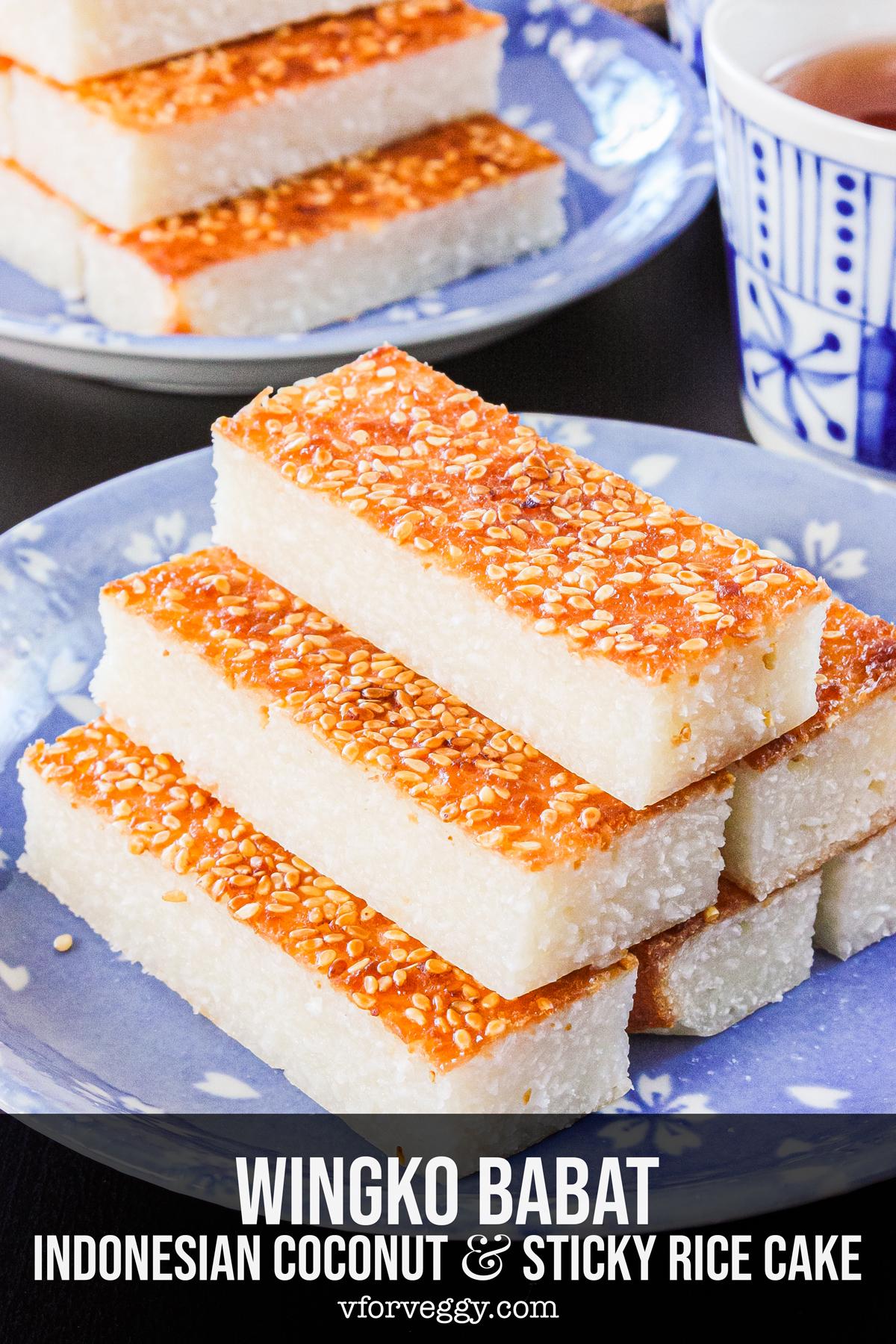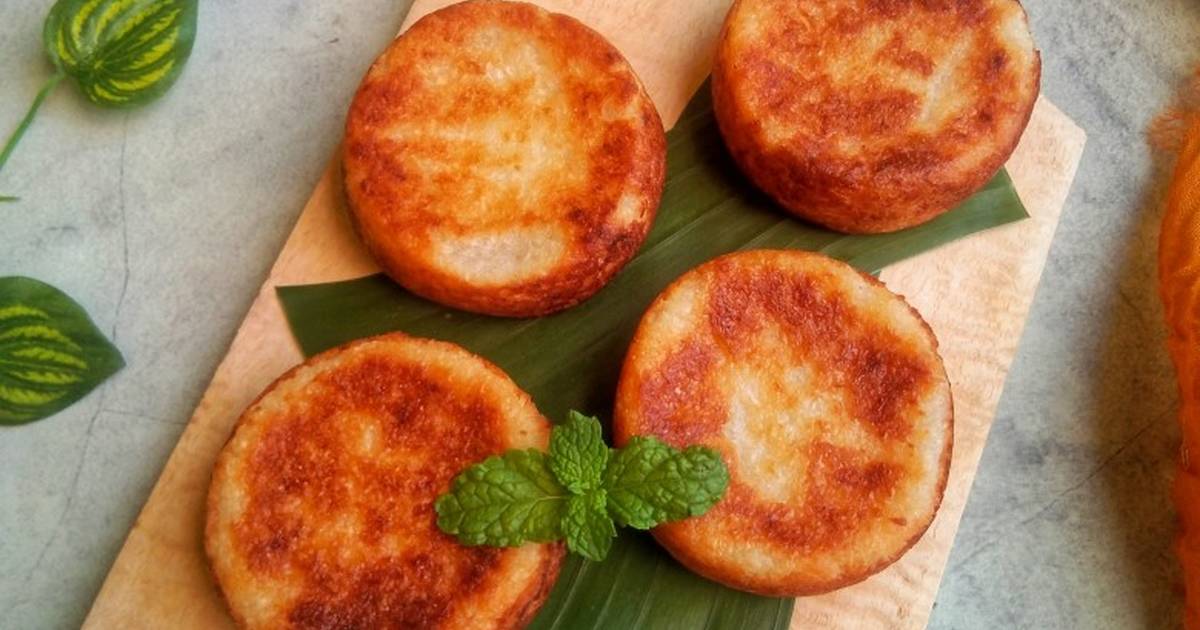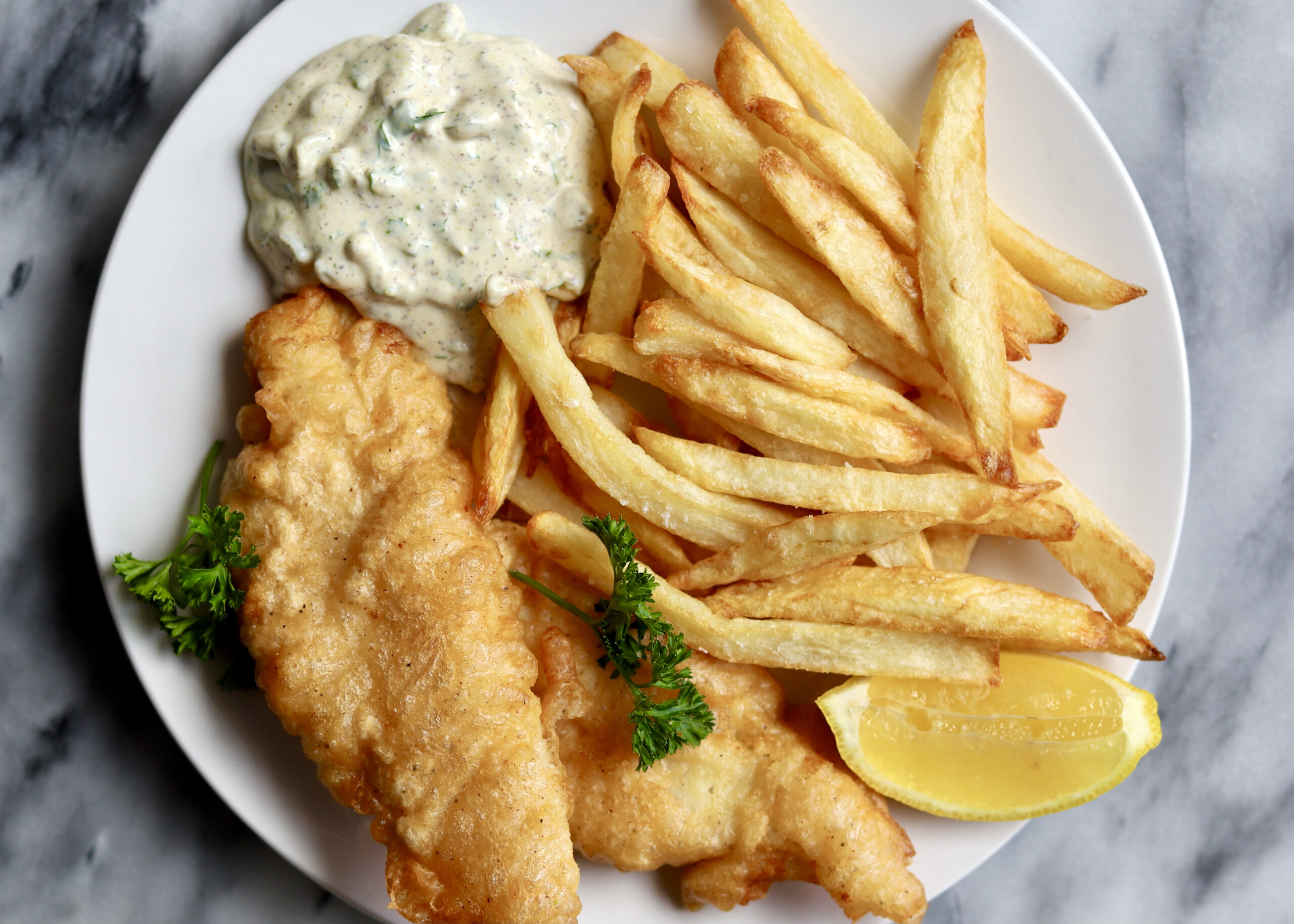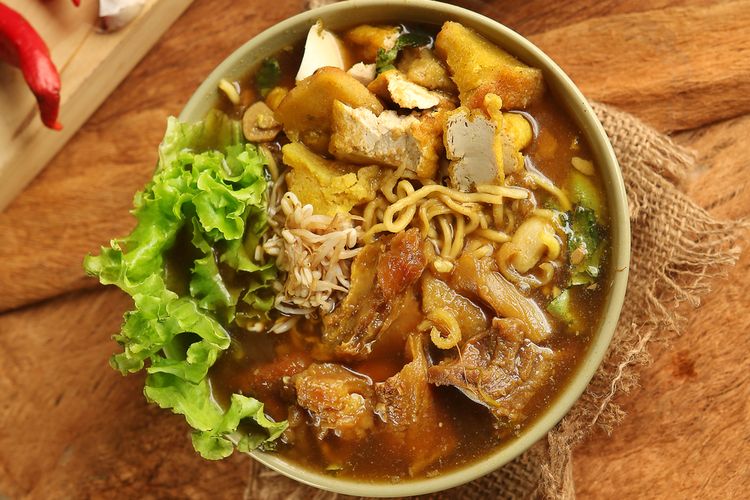
Of course. Here is a 1,200-word article about Wingko Babat.
A Bite of Nostalgia: The Enduring Charm of Wingko Babat, Java’s Coconut Jewel
In the bustling symphony of Indonesian culinary traditions, where complex spice pastes and elaborate ceremonial dishes often take center stage, there exists a humble, unassuming treat that has captured the hearts of millions: Wingko Babat. At first glance, it is deceptively simple—a round, flat, golden-brown cake. But one bite reveals a world of texture and flavor that speaks volumes of its Javanese heritage. Chewy, dense, sweet, and intensely coconutty, Wingko Babat is more than just a snack; it is a culinary ambassador, a cherished souvenir, and a bite-sized piece of nostalgia for countless Indonesians.
This beloved cake is a testament to the magic that can be created from a few core ingredients. Its soul is built upon a trinity of glutinous rice flour, freshly grated coconut, and sugar. The result is a confection that is both rustic and refined, a perfect harmony of sweet and savory notes that lingers on the palate. To understand the enduring appeal of Wingko Babat, one must journey through its history, deconstruct its simple yet perfect composition, and appreciate its profound role in Indonesian culture.

A Tale of Two Cities: The Disputed Origins of a Famous Cake
The name itself, “Wingko Babat,” offers the first clue to its story, yet it is also the source of a friendly regional debate. The name clearly points to Babat, a district in the Lamongan Regency of East Java, as its birthplace. Historical accounts suggest that the cake was first created and sold here in the early 20th century. Babat, situated along the strategic northern coastal route of Java (known as the Pantura), was a bustling trading post, making it a fertile ground for culinary innovation. The original Wingko from Babat was a simple, home-style cake, likely sold in local markets and enjoyed by the community.
However, if you ask many Indonesians where to find the best Wingko, they will almost universally point you to Semarang, the capital of Central Java. How did a cake from an East Javanese district become the signature souvenir of a Central Javanese city? The story is one of migration and entrepreneurship.
The most widely accepted narrative credits a Chinese-Indonesian family, led by Loe Soe Siang and his wife Djoa Kiet Nio, with popularizing Wingko. Fleeing the uncertainties of World War II in the 1940s, the family relocated from Babat to Semarang. To make a living, they began producing and selling the cake they knew best. They set up shop near Semarang’s Tawang Station, a major railway hub. This strategic location was a stroke of genius. Travelers passing through the station discovered the delicious, durable cake and began buying it as oleh-oleh—a gift to bring back home for family and friends.
The cake’s portability and satisfyingly long shelf life, thanks to the natural preserving qualities of sugar and cooked coconut, made it the perfect travel snack. Soon, other producers emerged in Semarang, and the city became synonymous with Wingko Babat. Today, the main streets leading to and from Semarang’s train stations and airports are lined with shops proudly displaying stacks of Wingko, each with its own legacy brand. While its roots are firmly planted in Babat, its fame was undeniably forged in the bustling transport hubs and entrepreneurial spirit of Semarang.

The Anatomy of a Perfect Wingko: A Symphony of Simple Ingredients
The beauty of Wingko Babat lies in its minimalism. There are no complex techniques or rare spices, only the masterful balance of a few high-quality ingredients.
1. Grated Coconut (Kelapa Parut): This is the heart and soul of the cake. The choice of coconut is crucial. The ideal coconut is one that is mature enough to have firm flesh but not so old that it becomes dry and oily. This semi-young coconut provides the perfect level of moisture, a subtle sweetness, and a pleasant, fibrous chew that defines the Wingko texture. When toasted during the baking process, the natural oils are released, infusing the cake with an irresistible, nutty aroma.
2. Glutinous Rice Flour (Tepung Ketan): This is the binder that gives Wingko its signature chewy, dense, and satisfyingly sticky quality, akin to Japanese mochi. Unlike regular rice flour, which would result in a crumbly texture, glutinous rice flour creates a pliable dough that holds the grated coconut together. It provides the satisfying “bounce” with every bite.
3. Sugar (Gula): Primarily for sweetness, sugar also plays a vital role in the texture and preservation of the cake. As it bakes, the sugar caramelizes on the surface, creating a beautiful golden-brown crust with slightly crispy edges. This caramelization provides a deeper, more complex flavor that complements the richness of the coconut.

4. Coconut Milk (Santan) and a Pinch of Salt: While some recipes use only water, the best Wingko often incorporates a small amount of thick coconut milk. This addition doubles down on the coconut flavor, adding a layer of creamy richness. A pinch of salt is the final, essential touch. It cuts through the sweetness, enhances the savory notes of the coconut, and makes all the other flavors pop.
When combined, these ingredients create a sensory experience that is uniquely Javanese. The aroma is the first to greet you—a warm, toasty scent of caramelized coconut and sugar. The first bite is a delightful contrast of textures: a slightly firm, browned exterior gives way to a soft, dense, and chewy interior, punctuated by the pleasant graininess of the grated coconut. It is sweet, but not cloyingly so, with a savory, almost buttery finish from the coconut fats.
From Charcoal Grills to Modern Ovens: The Art of Making Wingko
Traditionally, making Wingko Babat was a labor of love, cooked over a charcoal fire. The dough—a thick, heavy mixture of all the ingredients—was portioned and flattened into discs. These were then placed in special round molds or directly onto a greased griddle over hot coals. The gentle, consistent heat of the charcoal allowed the cake to cook through evenly, while imparting a subtle, smoky flavor that modern methods struggle to replicate. The baker would need to flip the cakes carefully to ensure both sides developed that signature golden, slightly charred crust.
Today, while some artisanal producers still use charcoal, most have adapted to modern kitchens. The most common method is to “bake” the Wingko on a non-stick pan (like a Teflon skillet) over low heat on a stovetop. This allows for excellent control and creates a beautifully browned surface. Alternatively, they can be baked in an oven, which is efficient for large-scale production.
Once cooked, the large round cakes are cooled and then typically cut into smaller, individually wrapped pieces. This iconic paper wrapping, often printed with the brand’s name and logo, is part of the Wingko Babat experience, a promise of the delicious treat waiting inside.
More Than a Snack: The Cultural Significance of Oleh-Oleh
To understand Wingko Babat’s place in Indonesian society, one must understand the concept of oleh-oleh. It is more than just a souvenir; it is a deeply ingrained cultural practice of bringing back gifts from a journey for loved ones. It is a tangible expression of “I was thinking of you.”
Wingko Babat is one of the most iconic oleh-oleh in Indonesia. Its durability, satisfying taste, and affordable price make it an ideal choice. For decades, the sight of someone carrying a stack of branded Wingko boxes has been a familiar scene at train stations and bus terminals across Java, signaling that they are returning home from Semarang or the Pantura region. It connects people and places, a sweet reminder of a journey taken and a thoughtful gift for those who remained at home.
For many Indonesians, the taste of Wingko is inextricably linked to memories of travel, family gatherings, and childhood. It is the taste of a holiday, the flavor of homecoming. Its humble nature makes it accessible to everyone, a democratic snack that transcends social classes. It is not a fancy French pastry, but a comforting, familiar food that evokes a sense of warmth and tradition.

The Evolution of a Classic
While the original coconut flavor remains the undisputed champion, Wingko Babat has proven its ability to adapt to changing tastes. Producers have introduced a variety of modern flavors to appeal to a new generation. Popular variations now include rich chocolate, pungent durian, fragrant jackfruit (nangka), and aromatic pandan. Some have even experimented with savory-sweet combinations like cheese. These innovations have kept the snack relevant and exciting, ensuring its continued popularity.
In every chewy, coconut-laden bite of Wingko Babat, one tastes more than just a simple recipe. One tastes a story of migration, a celebration of Java’s natural bounty, and the enduring power of a humble tradition. It is a culinary icon that has journeyed from a small district in East Java to become the proud symbol of a major city, all while retaining the simple, honest character that made it beloved in the first place. It is, and will remain, a timeless piece of Indonesian heritage, a warm memory waiting to be unwrapped.

The Enduring Charm of Wingko Babat, Java’s Coconut Jewel pictures collections gallery
The Enduring Charm of Wingko Babat, Java’s Coconut Jewel is a nice pictures and stock photo for your computer desktop or your smartphone device (ipad, tablet, blackberry, iphone, and other device) and also for your personal use. Free available for desktop wallpaper or additional image collections for your all needs. And was uploaded by admit at date July 1, 2025. You can download it in your computer by clicking download button to save image... have nice day and have fun guys..
This 1 image in featured post from 0 Photos/images Gallery and awesome picture selections about The Enduring Charm of Wingko Babat, Java’s Coconut Jewel is available to download. "Download & Save" images/pictures/wallpapers now and this Is one of the post that listed in packed to Category is Foods directory, with image dimension/resolution size is 1200 × 1800 px and size image/picture file is 323 KB with original link post ID is : https://powae.pw/of-course-here-is-a-1200-word-article-about-wingko-babat/. Get download/save images in post and gallery, "download" images or "preview" it on a bigger image for spesification sample in Large size (full attachment size) here : [Download & View to Large size]. Just Simple way, in thumbnail or in Gallery. *Click images to view Large Size.We collect this wonderful image from online and choose one of the best for you. Pictures collection that posted here was carefully chosen and published by author after choosing the ones which are best among the others. So, ultimately we make it and here these list of best image for your inspiration and informational reason regarding the The Enduring Charm of Wingko Babat, Java’s Coconut Jewel as part of blogsite exclusive updates collection. So, take your time and find the best informations and pictures posted here that suitable with your needs and use it for your own collection and personal use. About Image information: Image has been submitted and You are able to give your opinion as evaluations to our web site value.
Don't forget to comment if you interest with this images, you can share this post to social media like as facebook, twitter, google+, pinterest, stumbleupon, and more. just click social media buttons for share this post The Enduring Charm of Wingko Babat, Java’s Coconut Jewel Now. :)
Thanks for your visit, I hope you happy come to opo wae, wis opo wae, and get what you're looking for. And hope sometimes you will come back again here. All you need to do is help us develop by discussing this The Enduring Charm of Wingko Babat, Java’s Coconut Jewel if you like it "leave your comment". have fun, Thank you.




